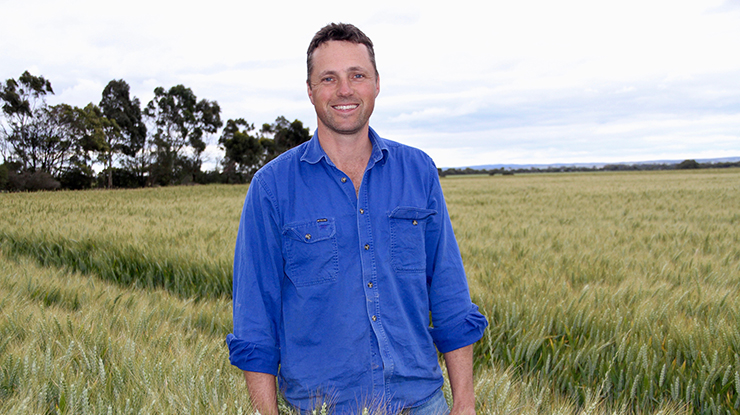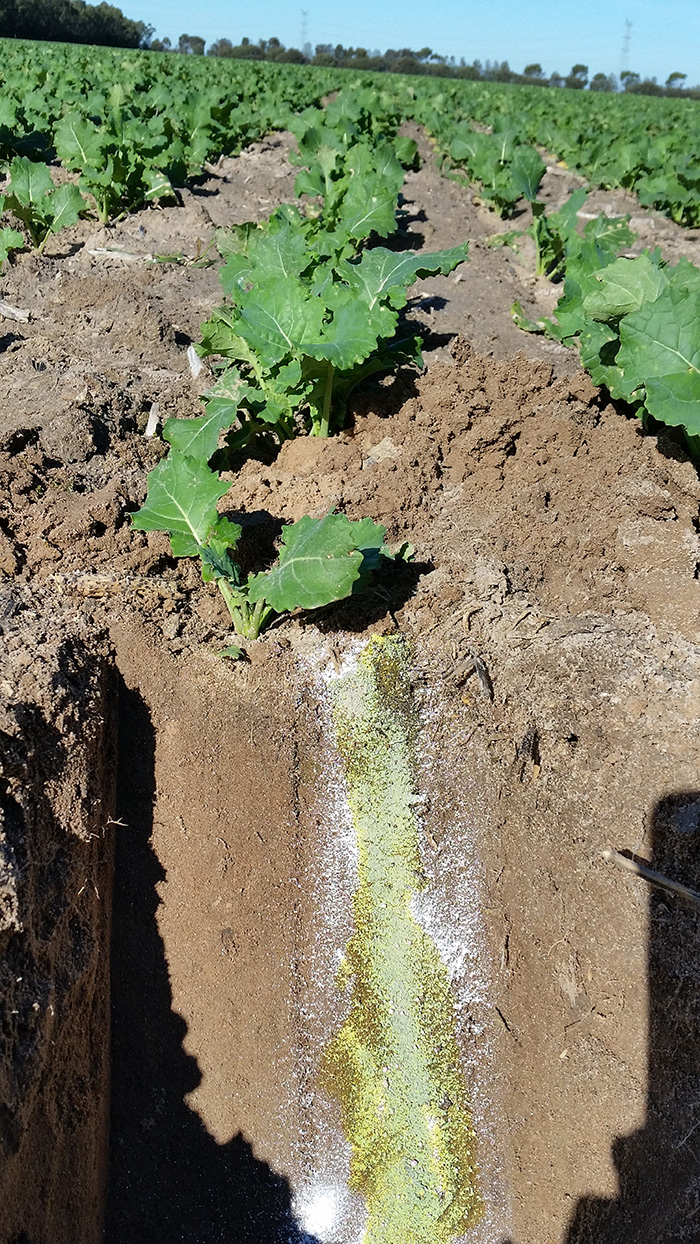
Data-backed fertiliser plan
Andrew Whitlock knows that productive soils are a key part of the farm management puzzle. Through his own on-farm experiences and his work with soil mapping company Precision Agriculture Pty Ltd, he has seen the benefits of soil testing to provide data that can inform his management decisions.
The benefits of soil testing include:
- identifying limiting factors that will inhibit pasture and cropping productivity, including soil texture and nutrient profile
- identifying deficiencies such as phosphorous that are key to animal and legume production
- developing data-backed fertiliser plans.
It’s for these reasons that Andrew started to soil test when he took over the management of ‘The Meadows’ four years ago, and was able to determine the most effective fertiliser plans to implement.
“For me, this data is crucial, because different soil types are going to require different management strategies to maximise production potential,” Andrew said.
Mapping every single hectare
For Andrew to trust his fertiliser plan, he said that it was imperative that he first understood varying soil textures and nutrient profiles that could help inform his decisions.
“Soils vary within paddocks, which is why it’s important to understand this variability and define a soil sampling program with respect to it,” he said.
Identifying soil nutrient profiles
The Meadows routinely uses grid-based topsoil testing every 5–6 years, collecting core samples on a two-hectare basis, to understand the nutrient profile.
“The grid-based testing is to measure soil pH, phosphorous levels and cations (calcium, magnesium, sodium and potassium), and provides an accurate spatial map of how the soils are performing across the property,” Andrew said.
Through these maps, Andrew knows the current nutrient status of his soils is up to scratch, and where acidity and sodicity improvements are necessary before production can be maximised.
Understanding soil textures
Another aspect of understanding soils on The Meadows was a one-off investment of roughly $20/hectare using electro-magnetic induction to define the different soil textural zones on the farm.
“When targeting supplements like phosphorous and lime, it’s important to know the soil textures to get the greatest benefit out of the investment,” Andrew said.
Combining textures and nutrient profiles, Andrew has been able to build variable rate strategies for phosphorous, potassium, lime and gypsum, balancing the correct amount of nutrients to maximise production potential across the property.
Balanced soils have improved production in both his crops and pastures, improved weed control, and meant he’s been able to consider pasture mixes that will be most effective on his country, such as short and long season clovers, to implement in the coming years.
“I also now know where there are issues with slow rainfall infiltration and waterlogging, and we’re dealing with this constraint through gypsum and drains,” he said.
Andrew said they also have targets to increase stocking rates and join more ewes through a combination of more productive pastures and smaller paddocks.
Understanding subsoils
Besides understanding what the critical levels for his soils need to be, soil testing has also helped Andrew recognise deficiencies in his subsoils.
“There are areas of our farm where we found increasing soil acidity with depth, as deep as 30–40cm,” Andrew said.
Pastures grown on acidic soils will have reduced production, and some legume species may fail to persist. Plant root systems will also not pass through acidic soils, meaning the plant receives limited moisture and nutrients.
“As a result, we’ve increased the alkalinity beyond 6pH(cacl2) on the surface of those identified areas to let it filter down into the subsoils and correct those deficiencies.”

Testing pH down the soil profile in a canola crop
An opportunity to experiment
Besides traditional fertilisers to address soil deficiencies on the property, Andrew said they have also found benefits in utilising other, lesser-adopted supplements.
“We’re looking at the impact of using manures and organic amendments on our lighter soils in the cropping phase of a rotation,” Andrew said.
“The theory is slower release nutrition will have a beneficial effect on both soil health and plant growth, and because of the soil mapping we’ve been able to match application rates with soil types.”
Informing more than just soil management
The benefits of soil testing for Andrew haven’t simply manifested under the ground – he’s used the data to improve other areas of his business too.
“We’re dividing paddocks up at the moment to improve our grazing efficiency and to split our lambing groups into smaller mobs for better lamb survival rates,” Andrew said.
“The soil data we have is letting us do that in the most productive way possible, by fencing to soil and landscape.”
“Many of our paddocks are between 50–100 hectares in size, and there is significant variability across all of them, offering opportunity for variable rate fertiliser and soil management, and where practical, fencing to soil class.”
Data to back up decisions
According to Andrew, soil testing has given him the confidence to know he’s making the right management decisions for his farm’s success.
“Farm management is long-term, so to do it efficiently and know that you’re putting money into the right areas, you need to have the baseline data to back your decisions – something soil testing has provided me with,” he said.
|
Name: Andrew Whitlock, ‘The Meadows’ |



